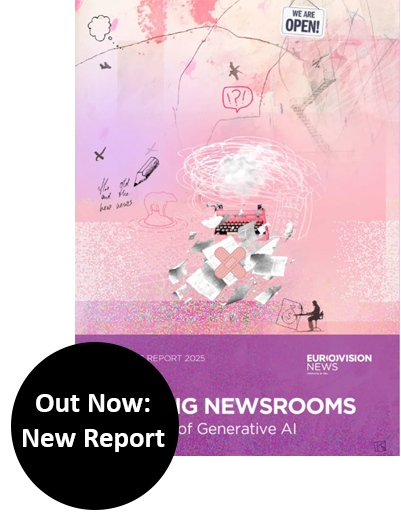The best insurance against misinformation is strong journalism. Professor Alexandra Borchardt explains how climate journalism and the data and verification skills we need to do this properly can transform our newsrooms.
It is often said that an abundance of questionable information drowns out facts. In climate journalism, the strategy should be to do the opposite: make journalism about global warming, its causes, and its remedies, so pervasive, that everybody everywhere can tell facts and reality from greenwashing and wishful thinking; drown out the misinformation with factual journalism.
This requires rethinking climate journalism from it being a “beat” or “specialist subject” to something that frames all our storytelling, particularly business reporting. This is a tough call, of course. Many obstacles hold media organisations back from prioritising investment in climate journalism. Climate issues often lack a newsy angle. They may be complicated and difficult to understand Coverage may mean expensive travel, and stories can be depressing, politically polarising, and if the journalism is delivered in a less than spectacular way, may fail to attract big audiences. All of which makes the commitment even harder.
Nevertheless, climate journalism is not optional. Journalists have an ethical responsibility, even a mandate to inform the public of threats and help them to make better decisions for themselves, their children, and their communities. Media has the duty to hold power to account and investigate wrongdoing. And a lot has gone wrong. Far too often publishers and broadcasters have kept global warming in the silo of science journalism, rather than at the heart of wider business and news coverage, even though it has been known for decades that the core issues are primarily economic, with powerful interests at play.
The good news is it might help editors and media managers to know that an investment in climate journalism will generate all sorts of benefits for their organisation. Precisely because climate journalism is so complex, the lessons that newsrooms can learn from doing it well can also be applied to other fields. To put it differently: sustainability journalism can make media more sustainable. This is the major conclusion of a report recently published by the European Broadcasting Union: “Climate Journalism That Works – Between Knowledge and Impact”.
It identified seven such benefits:
- First, climate journalism is about the future. Today’s journalism is too often stuck in the now. It needs to develop strategies to increase its legitimacy in the attention economy. This is especially true for public service media, which is under attack from various political camps. Who else should have a clearer mandate to contribute to the protection of humankind through better journalism? This way, public service media would also meet the needs of younger generations they are struggling to reach. Above all, it is their future.
- Second, climate protection needs hope. People only act if they believe they can make a difference. In contrast, today’s journalism focuses on conflict, shortcomings, and wrongdoing. Constructive and solutions-oriented journalism offer a way forward. A project called Drive, in which 21 German regional publishers pool their data, recently proved that inspirational pieces were the most valuable digital content when it came to subscriptions.
- Third, in climate change, it’s what’s done that counts. Today’s journalism still focuses too much on what has been said. The “he said, she said” type of journalism that dominates political reporting tends to be highly unpopular with users though. Modern journalism should be based more on data than on quotes. Fact-checking and verification come in right here: both need to become second nature for any journalist. Climate journalism is an excellent training ground.
- Fourth, climate journalism that works approaches a variety of audiences with respect and in languages they understand. It explains. Today’s journalism often elevates itself above its audience in a know-it-all manner. Journalism must become more diverse and inclusive if it is to reach people, inspire them, and move them to action. This applies to formats and protagonists.
- Fifth, climate journalism must be rooted in the local. In contrast, today’s journalism too often strives for reach, neglecting the specific needs of communities. To make itself indispensable, journalism should reclaim its importance as a community-building institution. Those who use or even subscribe to a media product often do so because it makes them feel they belong.
- Sixth, climate journalism must have an impact, otherwise it is meaningless. It should therefore reflect on its own practices and use insights from research, especially from communication sciences and psychology. Today’s journalism does this far too rarely. Journalists tend to be curious but often surprisingly resistant to change. Media companies could gain a lot if their managers and employees developed more of a learning mindset and trained their strategic thinking.
- Seventh, climate journalism benefits from collaboration. In today’s journalism, old-fashioned competitive thinking still dominates far too often. Yet so much potential could be leveraged through cooperation. This applies to networking within organizations among desks and regional bureaus, as well as to devoping links with external partners from within the industry and beyond. The journalism of the future is collaborative.
This blog post was published in March 2023 by the BBC’s Trusted News Initiative.



